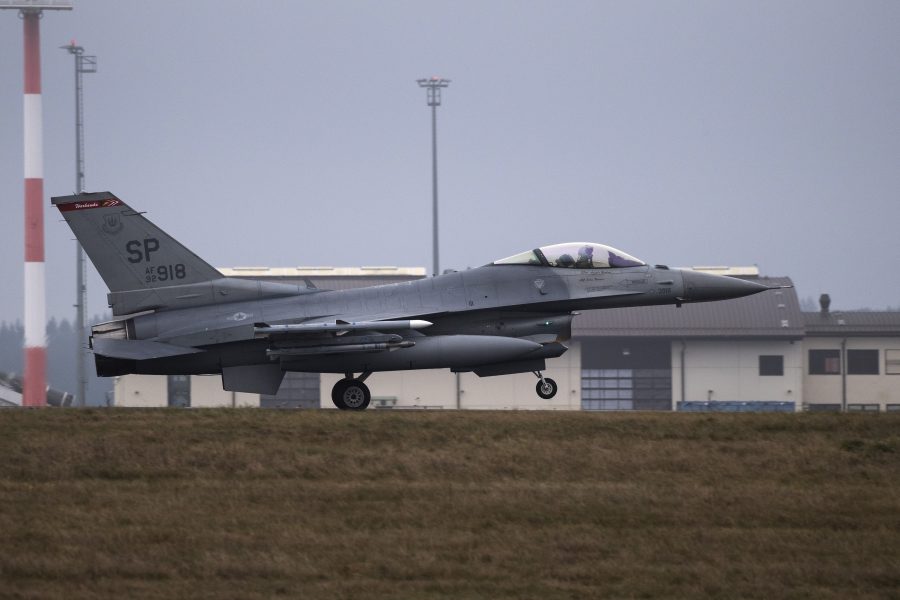The combination of an electrical failure and bad weather caused a pilot to eject and an F-16 to crash shortly after taking off from Spangdahlem Air Base, Germany, in October 2019, the Air Force announced.
The pilot survived, but the F-16 was destroyed at a loss of $25.5 million, according to a U.S. Air Forces in Europe-Air Forces Africa Accident Investigation Board report released Feb. 11.
On Oct. 8, the pilot, assigned to the 480th Fighter Squadron at Spangdahlem, took off as part of a three-ship training flight on a suppression of enemy air defenses training mission during the base’s readiness exercise Saber Fury. The flight was originally expected to include four F-16s, but one was unable to join because it experienced its own navigation instrument malfunction before takeoff.
The weather was rough around Spangdahlem, with a ceiling at just 500 feet and heavy clouds causing instrumental meteorological conditions up to 15,000 feet—a situation in which the pilot can’t see the environment around the aircraft and relies on the in-cockpit instruments.
Thirteen seconds after taking off, the F-16 experienced a power disruption causing a partial power loss, regularly called a “brown-out,” which took out most of the instruments. The report states the pilot’s heads-up display went blank, the aircraft’s malfunction display set turned off, the electronic horizontal situation indicator went blank, the embedded GPS and inertial navigation set to lose power, the primary attitude director indicator froze, and the pilot-activated recovery system was unavailable.
The pilot continued to fly at what he believed was 5- to 10-degrees nose high based on the attitude indicator, which the pilot did not know was frozen. The pilot also could not determine the jet’s heading because both the HUD and horizontal situation indicator were blank.
About 45 seconds after takeoff, the F-16 descended to just 280 feet above field elevation and the pilot could begin to see trees. This prompted a quick climb on maximum afterburner. Back in the clouds, the pilot tried the recovery system and radioed to the wingmen, telling the other pilots he lost spatial orientation and to halt the training mission to help with the situation.
The pilot then realized the navigation systems malfunctioned, and wasn’t showing what he saw on the ground. This prompted a “more aggressive” cross check of instruments, in which the horizontal situation indicator restarted and froze, showing the pilot was heading in a different direction.
A minute after takeoff, the plane descended again and the pilot saw more trees, prompting another climb. The pilot tried the recovery system again, with no success. At this point, he realized if the aircraft descended again, it “wouldn’t have sufficient energy to maneuver away from the ground.” He radioed, “two’s ejecting,” and punched out about 1 minute and 31 seconds after takeoff, egressing safely.
The F-16 flew on its own for another 42 seconds before hitting trees about eight nautical miles south of the base. It was completely destroyed, with debris strewn over a field about 1,000 feet long and 300 feet wide.
The investigation found pilot error was not a factor in the crash, citing electric issues and weather instead.
